K-Town
The dark, pungent, and crowded area immediately outside Tsuruhashi Train Station serves as forced introduction to Osaka’s Koreatown. As you exit Tsuruhashi Station, the narrow alleys are filled with people and smells greet visitors. The alleys can fit two people comfortably or three people uncomfortably, and as I made my way past little shops and stalls, my backpack felt more and more like a nuisance to all of us trying to navigate the narrow streets.
Three kinds of shops dominate the alleys beneath the train station: food stores, clothing stores, and restaurants.
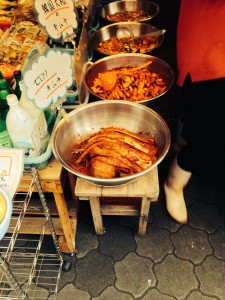 The food shops are the most frequent and foul smelling of the three. The stores that sell food to be taken home are generally small and they share a similar setup. The shop will only be a couple meters. In the back, Korean condiments like gochuchang, Korean brand ramen, and some sweets or snacks from the old country will line the two or three shelves. The shop will have an open cooler or refrigerator located on the outer edge of the store so customers can sort through and sample the different items sold. Usually the coolers are filled with plastic containers or bags bearing the delicious accompaniment of most Korean meals: kimchi.
The food shops are the most frequent and foul smelling of the three. The stores that sell food to be taken home are generally small and they share a similar setup. The shop will only be a couple meters. In the back, Korean condiments like gochuchang, Korean brand ramen, and some sweets or snacks from the old country will line the two or three shelves. The shop will have an open cooler or refrigerator located on the outer edge of the store so customers can sort through and sample the different items sold. Usually the coolers are filled with plastic containers or bags bearing the delicious accompaniment of most Korean meals: kimchi.
One of the best ways to learn more about a culture is to take a closer look at the native cuisine. As far as what is native to Korea and its surrounding waters, Korea was dealt a rough draw. 70% of Korea is covered with mountains, and the flat lands are filled with either rice fields or cities making the varieties of agricultural products quite limited. In addition, the sea that surrounds Korea yields only a few low tide types of fish that aren’t exactly sought out for their delicious flavor. As a result, the main staple of Korean cuisine after rice is kimchi: vegetables fermented with a variety of spices and seasonings. The most common form of kimchi is cabbage, but varieties of cucumber and raddish kimchi are pretty popular as well.
After getting off the train, I wondered around the covered area for a while until I had worked up enough of an appetite to sit down and enjoy a snack. The second most common under the station establishment is the food stall. Many of these food stalls sell two or three Korean snack foods, and I managed to find at least a dozen selling jun: Korean savory pancakes.
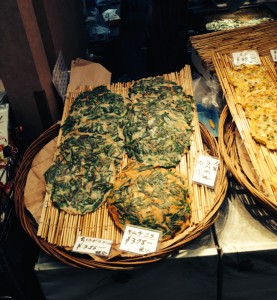 There are many different types of jun, but I ended up ordering one that was spicy and filled with scallions. The stall had about 8 chairs and half as many patrons. The pancake was delicious with a little crunch on the outside to contrast the chewiness on the inside. The pancake was also paired with a spicy sauce that added an extra kick to the peppers in the pancake as well.
There are many different types of jun, but I ended up ordering one that was spicy and filled with scallions. The stall had about 8 chairs and half as many patrons. The pancake was delicious with a little crunch on the outside to contrast the chewiness on the inside. The pancake was also paired with a spicy sauce that added an extra kick to the peppers in the pancake as well.
After eating my savory pancake, I decided to indulge in the sweet counterpart to jun: hotteok or a pancake filled with gooey delicious cinnamon. A couple of stalls over, a lady was dropping balls of dough onto a flat top griddle. I handed the lady my 200 yen, and I was on my way with another crispy and filled pancake in hand. The outside was again crispy, and the cinnamon filling was hot enough to burn mouths and sticky enough to rot teeth. As opposed to sitting and eating, I took this one to go and headed for the main portion of Koreatown.
After getting out of the covered area of the station, the Korean influence is still on display with frequent restaurants or shops that cater to Korean taste. The actual Koreatown is about a ten minute walk from Tsuruhashi Station complete with a Koreatown gate. Instead of the dark and covered area around the station, Koreatown proper has a main street that can cater to two vehicles. The shops here are much of the same as the shops around the station, but they happen to be much bigger. Restaurants in Koreatown are more proper as well, and many of them have bigger menus and bigger seating areas. The food is also a bit more diverse with one restaurant even advertising a kimchi sandwich. The sun was a welcome addition, and I enjoyed walking around and seeing all of the Korean butchers and lines of people trying to snag some kimchi or meat for a later meal.
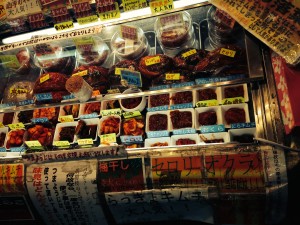 I also decided to grab a bag of kimchi to take home, so I stopped by one of the little shops on the side. Two ladies greeted me in Japanese, and I began to ponder which kind and how much kimchi I wanted. I ended up going with the classic cabbage, and purchased a kilo of kimchi for about 1000 yen. I walked around for a little longer and decided to stop into one of the shops for a proper meal.
I also decided to grab a bag of kimchi to take home, so I stopped by one of the little shops on the side. Two ladies greeted me in Japanese, and I began to ponder which kind and how much kimchi I wanted. I ended up going with the classic cabbage, and purchased a kilo of kimchi for about 1000 yen. I walked around for a little longer and decided to stop into one of the shops for a proper meal.
I found a little place around the station and strolled on in. The little shop had various Korean groceries and photos of classic dishes on the wall. I decided to get some samgyupsal and kimchi jjigae. Samgyupsal is the most popular form of Korean BBQ. Samgyupsal is pork belly cut into little strips that are ready to be grilled by the customer to your liking. Samgyupsal is always served with leaves to wrap the finished meat in along with some red chili paste, gochujeong, and sesame oil. When the meat is finished, it is dipped into the sesame oil and then wrapped in a piece of lettuce to form a perfect bite of crunch, meat, and spice. As with all Korean meals, the meat is accompanied by tons of little side dishes.
After a couple of minutes, my boiling bowl of kimchi jjigae was brought out. Kimchi jjigae is a stew that is kimchi based and normally has bits of pork and tofu that add a little protein. The soup is always accompanied by a bowl of rice that gives some much needed carbohydrates. The soup is a little spicy, and I was pleased to get a much needed kick that was not wasabi.
Koreatowns or Little Seouls pop up in many big cities around the world offering native Koreans and curious locals the opportunity to eat Korean food and drink. Korean food is not as popular worldwide as many other Asian cuisines, although it could (should) be, so Koreatowns are bastions of Korean BBQ, soju, and kimchi based dishes. A native Korean walking around one of little neighborhoods must feel the same comfort that westerners feel letting loose in a western owned bar or restaurant in Asia. The ability to talk to anyone in your native tongue slipping in slang without worrying about if all parties involved catch your cultural references is comforting. Shooting soju and flipping pork belly on a hot grill must be the equivalent to whenever I am able to order cider that isn’t brewed in Japan or devour a hamburger that does not feel too tainted by my current geographic location. The Koreatown in Osaka is a nice little reminder of the Osaka’s diversity, and a visit to Koreatown for some strolling and a delicious meal make for an excellent afternoon or evening endeavor any day of the week.
Bender
Bender is a first year ALT who recently relocated from the home of country music to the countryside of Japan. On weekdays, you can find him roaming the rice fields of Inagawa thinking of ways to tinker his teaching. When he isn’t working, he enjoys watching hockey and baseball, playing fantasy football, and trying different kinds of Japanese foods
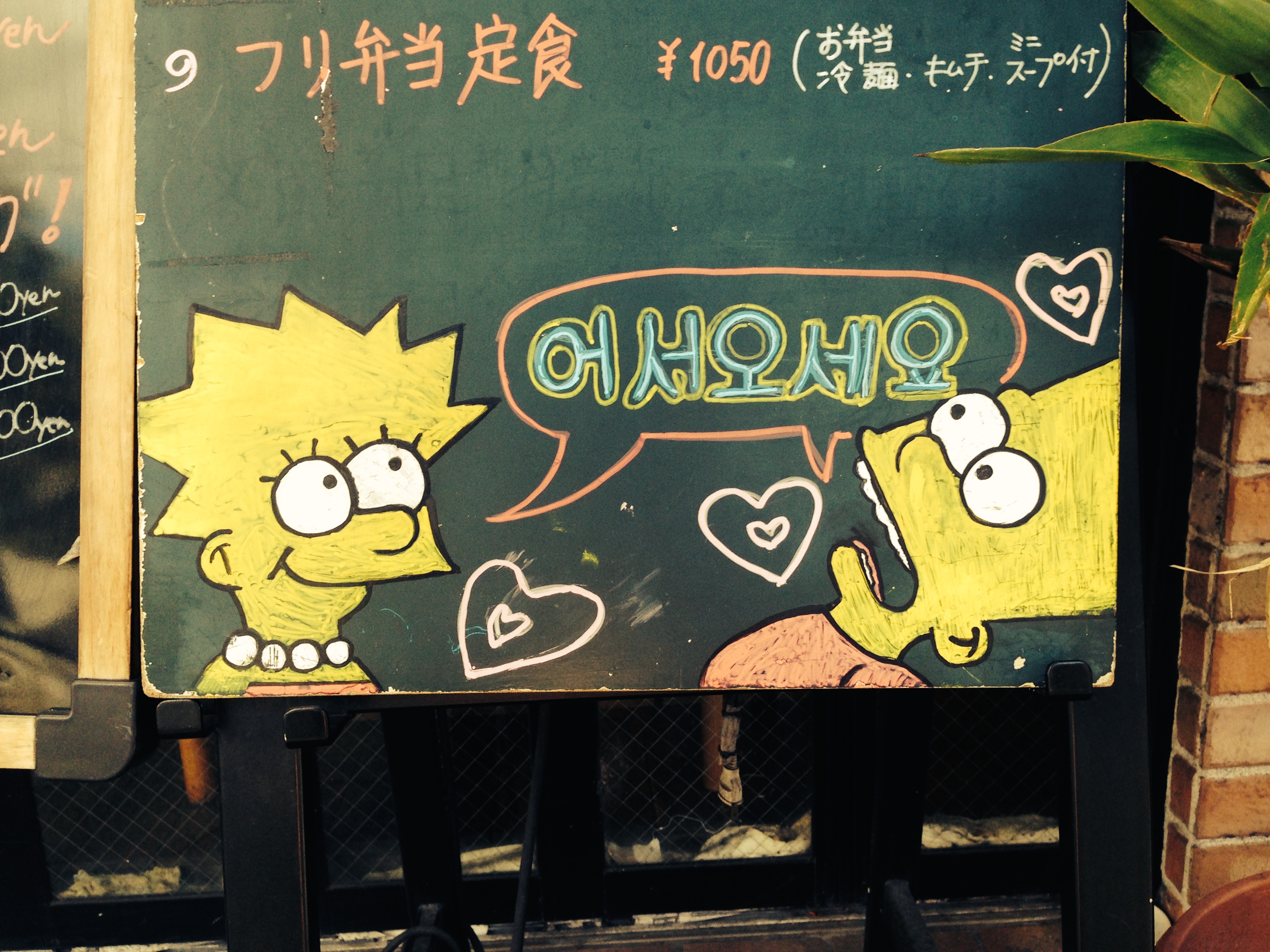



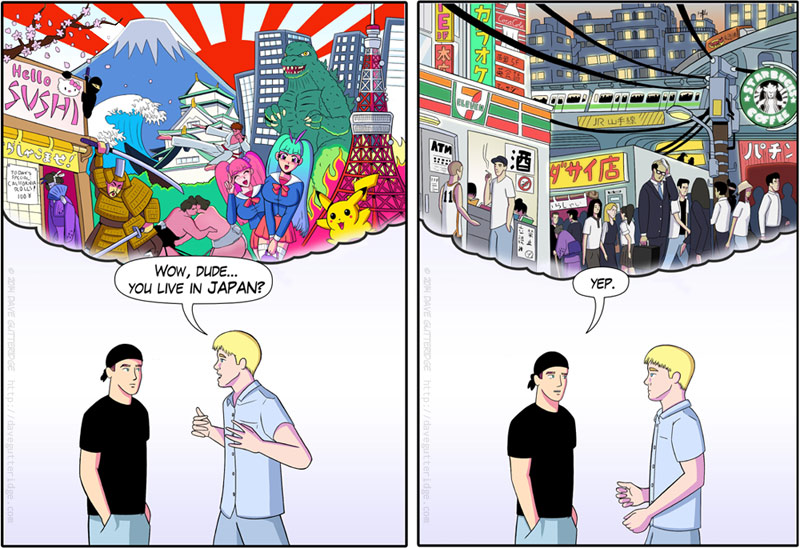

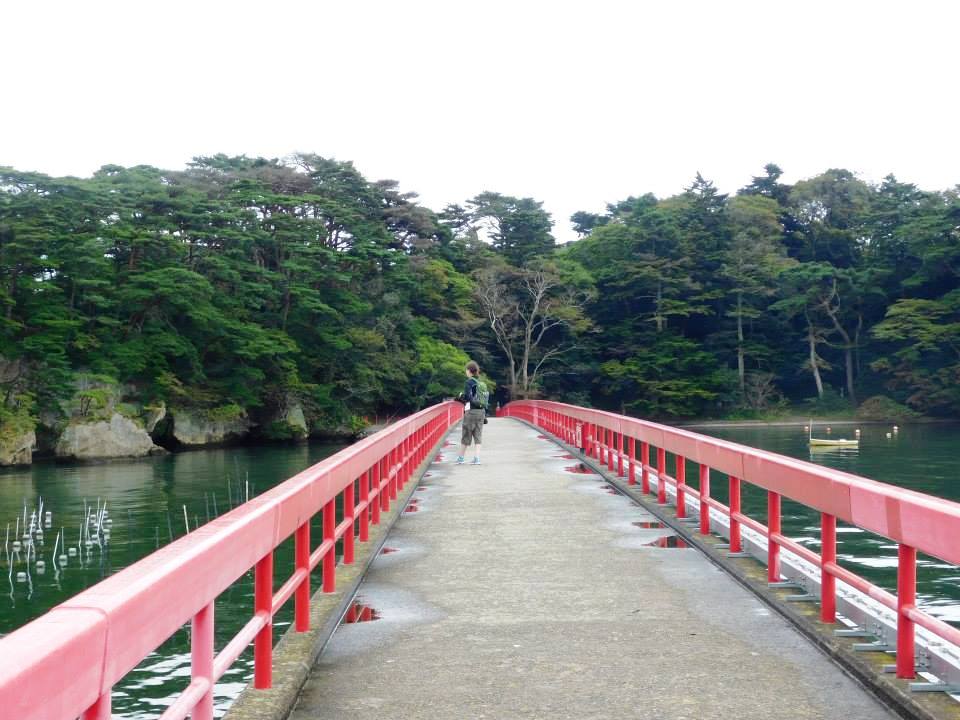
Great article! Made me feel like I was walking the streets of Koreatown in Osaka, smelling the food, eating the pancakes!!!
Great article! Makes me feel like we are sitting down together and you are giving me an excellent description of Korean food. Worth a try!